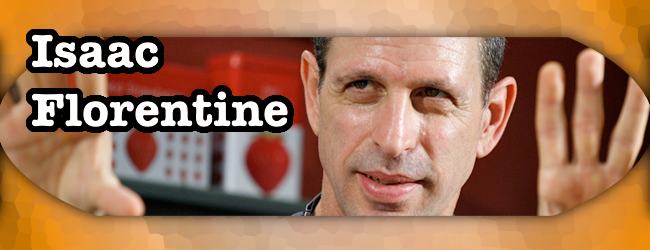Isaac Florentine has direct 13 feature films, and over 10 television shows. He has worked with stars Jean-Claude Van Damme, Dolph Lundgren, and Michael Jai White. His credits include the well-received Undisputed 2, The Shepherd, and Bridge of Dragons. Isaac’s newest film ‘Ninja‘, is available now on DVD and Blu-Ray.
Jason: What films or filmmakers caused you to pursue a career in films?
Isaac: You can tell by my accent that I’m not American. I’m originally from Israel. Ever since I was a kid, I have been inspired by the cinema. My favorite films were the old spaghetti westerns from Sergio Leone; I really fell in love with them. Even more so than the American westerns that was coming out at the time.
J: You’re renowned for your work on action films, specifically in the Martial Arts genre. Many people don’t know that you yourself are an accomplished Martial Artist. Can you tell us about your background in the Arts?
I: I started studying Martial Arts (Karate) forty years ago. And I train to this day, I still love it a lot. I have four kids now and they all train in the arts too. As much as I love films, Martial Arts are my true love. So I wanted to be a filmmaker that could combine my two passions. It had always been my dream to do these action and Martial arts style films since I was in middle school. In Israel after you graduate high school, you must spend three years in the army. My plan, the dream, when I got out was always to do these genre movies.
J: Does having a background in martial arts give you a common language with your actors while choreographing a fight sequence?
 I: Totally, it’s more than that. The attributes of martial arts is more than the fighting. Screen fighting, in my case. I see many directors’ even ones that work in the studio system, when it comes to the action scenes they kind of feel uncomfortable and instead of really directing the scene they just cover the scene. There’s a big difference between coverage and directing. When I say cover a scene, I mean setting up a shot and letting the camera cover what the actors are doing, hoping to have it come together in the editing. My philosophy, first I want to see the techniques. It’s like the old musicals with Fred Astrie or Gene Kelly; you saw them from top to bottom. People wanted to see them dancing. You knew it was them. It’s similar to the martial arts in my movies. So first I want to see the technique and second I want to move the camera and use it in a way that helps tell the story and becomes part of the fight scene, to glorify it. And what I want to try and avoid is really cutting or over cutting the scene. Because many times you go to films and the action is chopped and scattered and you don’t know what’s going on. You hear the sound effects and it creates the illusion but there is a sense of confusion. When I see that, I totally go against the film. So coming from a martial arts background, it really helps me because I know exactly how it supposed to look, how it should feel, and especially how to capture it on film. Sometime we will alter the routines to avoid having to make additional cuts and to keep the pace. There is another attribute that I carried over from martial arts into film making. There is this cleanness of the techniques, when you look at the form of a ‘kata’, its precision and clean. I make my edits, even in the dramatic scenes very precise. So I think that the contribution is more than know- how to stage a fight scene. Most of my actors are martial artists. They totally see that you know what you are talking about and there is an instant trust.
I: Totally, it’s more than that. The attributes of martial arts is more than the fighting. Screen fighting, in my case. I see many directors’ even ones that work in the studio system, when it comes to the action scenes they kind of feel uncomfortable and instead of really directing the scene they just cover the scene. There’s a big difference between coverage and directing. When I say cover a scene, I mean setting up a shot and letting the camera cover what the actors are doing, hoping to have it come together in the editing. My philosophy, first I want to see the techniques. It’s like the old musicals with Fred Astrie or Gene Kelly; you saw them from top to bottom. People wanted to see them dancing. You knew it was them. It’s similar to the martial arts in my movies. So first I want to see the technique and second I want to move the camera and use it in a way that helps tell the story and becomes part of the fight scene, to glorify it. And what I want to try and avoid is really cutting or over cutting the scene. Because many times you go to films and the action is chopped and scattered and you don’t know what’s going on. You hear the sound effects and it creates the illusion but there is a sense of confusion. When I see that, I totally go against the film. So coming from a martial arts background, it really helps me because I know exactly how it supposed to look, how it should feel, and especially how to capture it on film. Sometime we will alter the routines to avoid having to make additional cuts and to keep the pace. There is another attribute that I carried over from martial arts into film making. There is this cleanness of the techniques, when you look at the form of a ‘kata’, its precision and clean. I make my edits, even in the dramatic scenes very precise. So I think that the contribution is more than know- how to stage a fight scene. Most of my actors are martial artists. They totally see that you know what you are talking about and there is an instant trust.
J: Your new film ‘Ninja’, is your fifth pairing with actor Scott Adkins. Can you tell us a little bit about the film and your working relationship?
I: I’ve worked with Scott on five films. I met Scott by chance, through a VHS tape my good friend Don Warrner got and told me to look at. When I looked at it I saw his techniques and that he was full of charisma, and then I saw his acting skills from productions that ran on  BBC. And I was blown away. I wanted to work with him and we have done five movies together now. Warner Brothers was coming out with Ninja Assassin. And Nu Image wanted to do something in the same vein, although our budget was one tenth of theirs. However I wanted to give them something that would compete with that film. This is how Ninja came about. The premise is very simple. If you remember ‘Batman Begins’, Bruce Wayne is basically becoming a ninja. My idea was to do the total reverse, in our film the ninja becomes a ‘Batman type’. So that was the idea. The movie is like a video game or a comic book. The only authentic thing is the school of ninjas. There is a controversy about the lineage of ninjas. Historically ninjas ceased to exist in the seventeenth century. The last trained Ninjutsu master Fujita Seiko pasted away in 1966. All of the movers and shakers in the martial arts worlds come to his funeral. So I said to myself ok. If this man were alive today and running a ninjas academy what would it look like. I based it on the old Katori Shinto Ryu school that still exist today This is why the scenes are in Japanese subtitles and why I brought in several well known Japanese martial artists headed by Sensei Fumio Demura To give the film some sense of authenticity. Other than this, the film is a comic book.
BBC. And I was blown away. I wanted to work with him and we have done five movies together now. Warner Brothers was coming out with Ninja Assassin. And Nu Image wanted to do something in the same vein, although our budget was one tenth of theirs. However I wanted to give them something that would compete with that film. This is how Ninja came about. The premise is very simple. If you remember ‘Batman Begins’, Bruce Wayne is basically becoming a ninja. My idea was to do the total reverse, in our film the ninja becomes a ‘Batman type’. So that was the idea. The movie is like a video game or a comic book. The only authentic thing is the school of ninjas. There is a controversy about the lineage of ninjas. Historically ninjas ceased to exist in the seventeenth century. The last trained Ninjutsu master Fujita Seiko pasted away in 1966. All of the movers and shakers in the martial arts worlds come to his funeral. So I said to myself ok. If this man were alive today and running a ninjas academy what would it look like. I based it on the old Katori Shinto Ryu school that still exist today This is why the scenes are in Japanese subtitles and why I brought in several well known Japanese martial artists headed by Sensei Fumio Demura To give the film some sense of authenticity. Other than this, the film is a comic book.
J: Have you seen the final cut, are you happy with how it came out?
I: Yes and no. The story is weak I’ll be the first to say. There was a mistake made early on story wise. The original idea was to have the Russian Mafia as antagonists. The company behind the film (Nu Image) had just done another picture, ‘The Code’, which also featured the Russian Mafia as bad guys. They wanted to change the villains, and I felt that was a mistake. Ultimately, I am just a gun for hire so I had to go with it. Being honest, Ninja has some great scenes but the story and the characters are very weak. It’s like a video game. Taken at that level it’s very satisfying.
J: When you were working on Undisputed 2 was the plan always to create a series or a trilogy? Or did the success of the sequel create the demand?
I: Not at all, Undisputed 2 happened by chance. The company was preparing to do another film, a big budget movie called the Black Dahlia. They really wanted to give some work to the crew for the meanwhile. So this is how Undisputed 2 came to be. There was no intention of becoming a franchise at that time. But when it was released people liked it, they got behind the story and it became a success. So the company wanted to do part three.
J: Can you tell us anything about Undisputed 3: Redemption?
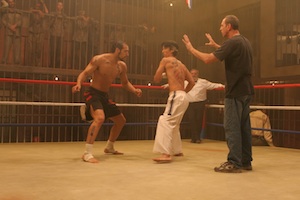 I: I’m very happy with Undisputed 3, even though it’s a smaller film than ‘NINJA’. At this point it’s totally complete. If you remember, the idea behind Undisputed 2 was to take the bad guy from the first film, and make him the protagonist. So what we’ve done with the new film is to take the villain from part two and make him the hero of Undisputed 3. The events take place a year or two later. This time, we follow Boyka (Scott Atkins) and it’s his redemption. The story starts with him recovering from his knee injuries incurred during the second film. He wants to fight in a competition that is similar to jail Olympics in the ex-Soviet Republic of Georgia. Of course, you can’t take such a negative character, and then suddenly make him a total nice guy, so it presented challenges. Scott is wonderful in this film.
I: I’m very happy with Undisputed 3, even though it’s a smaller film than ‘NINJA’. At this point it’s totally complete. If you remember, the idea behind Undisputed 2 was to take the bad guy from the first film, and make him the protagonist. So what we’ve done with the new film is to take the villain from part two and make him the hero of Undisputed 3. The events take place a year or two later. This time, we follow Boyka (Scott Atkins) and it’s his redemption. The story starts with him recovering from his knee injuries incurred during the second film. He wants to fight in a competition that is similar to jail Olympics in the ex-Soviet Republic of Georgia. Of course, you can’t take such a negative character, and then suddenly make him a total nice guy, so it presented challenges. Scott is wonderful in this film.
J: Did you use the same Cast and Crew from the previous installment?
I: I knew who I wanted for the cast from the start. I wish I had a bigger budget to attract more ‘names’ but I was able to bring in great talent. Such as Marco Zaror whose fantastic. In reality he’s the nicest guy in the world, so the challenge was to make him look like a creep and I believe we accomplished that. He did a great job in the portrayal. We had Lateef Crowder as a Brazilian fighter specializing in the art of Capoeira as well as Ilram Choi who is the North Korean fighter. All the rest were really guys from the local area. Behind the cameras we had the addition of choreographer Larnell Stovall. He accepted the challenge in front of him, worked 24/7, and did an awesome job in the end. There are more fights in this film than the previous installment and each fighter is presented with his own unique fighting style. This was my forth time working with Director of Photography Ross Clarkson and my 12th collaboration with Editor Irit Raz. So it’s more or less the same crew.
J: Michael Jai White doesn’t return for this third installment. Was it difficult to replace him?
I: Michael’s character, George Chambers is not in the film , however there was another American fighter in the film. It was a challenge, to fill Michael’s shoes. Michael has a lot of 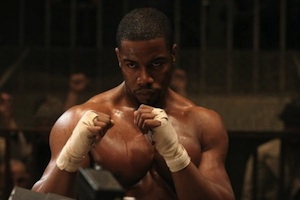 charisma; he’s a very good actor, and a fantastic martial artist. I was auditioning for a long period, looking for someone who had the look, acting ability, and some athleticism. Time after time I would find someone with two out of the three elements. Either they were good actors with charisma and no fighting ability, or great fighters with limited acting skills. This went on for awhile. Then on the last day of auditions Mykel Jenkins came in and read for me, and I was very impressed. He wasn’t a Martial Artists, he did have some background in Boxing but he worked very hard with Larnell to look like a fighter. We also tailored the script to better suit his character. Mykel did a fantastic job, the emotional part in this film is the friendship between Byoka (Scott) and Turbo (Mykel) .
charisma; he’s a very good actor, and a fantastic martial artist. I was auditioning for a long period, looking for someone who had the look, acting ability, and some athleticism. Time after time I would find someone with two out of the three elements. Either they were good actors with charisma and no fighting ability, or great fighters with limited acting skills. This went on for awhile. Then on the last day of auditions Mykel Jenkins came in and read for me, and I was very impressed. He wasn’t a Martial Artists, he did have some background in Boxing but he worked very hard with Larnell to look like a fighter. We also tailored the script to better suit his character. Mykel did a fantastic job, the emotional part in this film is the friendship between Byoka (Scott) and Turbo (Mykel) .
J: Has a release date been set?
I: UNDISPUTED 3 will probably be premiering at ‘Action Fest’ (April 15th-19th) in Asheville, NC. I don’t want them to wait too long, I’m afraid there will be piracy.
J: Has Piracy affected other films of yours?
I: Yes. Ninja was leaked online in December. It was all over YouTube. It’s a problem, not only with my films, but with every movie released today.
J: One of your earliest screen credits is as Fight Choreographer on the 1993 film ‘American Cyborg: Steel Warrior’, the last theatrical release from Cannon films. Do you have any memories of working on your first feature film?
I: On ‘American Cyborg’ I worked with Boaz Davidson, who became a very good friend of mine to this day. He’s my sensei (a teacher) in filmmaking; in fact he produced seven of the films I’ve done with Nu Image. Boaz is a great storyteller and he’s a very good director in his own right. I worked as a choreographer only but it was really fun. I remember thinking, this is it!
J: You’ve worked with many Stars in your career, among them Jean Claude Van Damme and Dolph Lundgren. Is it difficult directing veteran actors with big names?
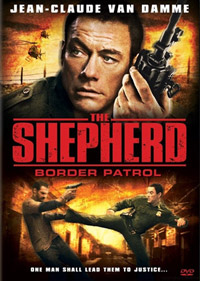 I: I feel the big stars, the veterans. Once they see that you are capable and have a clear vision, they go with you. A trust is born. With Dolph and JCVD each story was a little different. I met Dolph in 1980, years before he had any intention of becoming an actor. I had traveled to Sweden to study Karate at our main dojo in Stockholm. My sensei’s best friend was Dolph’s teacher so we knew each other through the Martial Arts 19 years before either of us knew we would be working together on a film set one day. My relationship with JCVD also came through Karate. He called me about ten years ago; we had a mutual friend in the Arts. JC said he wanted to work together, a few hours later I went over to his house and met him and his family. Because of our mutual background in Karate we hit it off immediately. Once again it’s the ‘Karate Connection’.
I: I feel the big stars, the veterans. Once they see that you are capable and have a clear vision, they go with you. A trust is born. With Dolph and JCVD each story was a little different. I met Dolph in 1980, years before he had any intention of becoming an actor. I had traveled to Sweden to study Karate at our main dojo in Stockholm. My sensei’s best friend was Dolph’s teacher so we knew each other through the Martial Arts 19 years before either of us knew we would be working together on a film set one day. My relationship with JCVD also came through Karate. He called me about ten years ago; we had a mutual friend in the Arts. JC said he wanted to work together, a few hours later I went over to his house and met him and his family. Because of our mutual background in Karate we hit it off immediately. Once again it’s the ‘Karate Connection’.
J: There has been a persistent internet rumor for some time now concerning the film ‘Max Havoc’. It’s been said you served as an un-credited ‘ghost director’. Can you comment on this?
I: The truth is the truth, is the truth. Here is the story. The movie was completed and the producer was having problems selling it. He hired me to go out and shoot some additional scenes. In all it equates to about 10-12 minutes of screen time. I told the producer, ‘Look I don’t want to put my name on it. I don’t feel it’s fair to the original Director Albert Pyun.’ It’s honesty it’s not my movie. A couple years ago this question came up and I denied it. And afterwards I felt guilty about it. The film runs about 90 minutes, ten percent of which is mine. So that’s the truth of the matter.
J: Any future projects and upcoming appearances you’d like to tell us about?
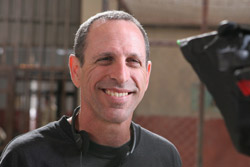 I: There are a few things that I have in development. But I’m kind of a superstitious man. I don’t believe a film is actually going to happen until I’m finally on set and I hear the camera rolling. So until then I don’t like to talk about future projects.
I: There are a few things that I have in development. But I’m kind of a superstitious man. I don’t believe a film is actually going to happen until I’m finally on set and I hear the camera rolling. So until then I don’t like to talk about future projects.
J: Thank you for taking the time to speak to us today, we know you’re a busy man.
I: We’re in the business where you can be totally busy and then there’s a downtime where you know you are basically climbing up the walls. My good friend director Sam Firstenberg who directed American Ninja calls it the business of dreams… It was a pleasure.
Read Movie Mavericks’ Review of Ninja

